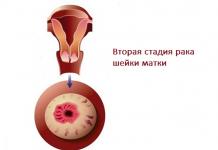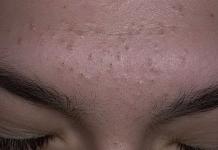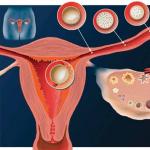What is intestinal atony? The disease under consideration is a decrease in the tone of the smooth muscles of the gastrointestinal tract. In difficult cases, peristalsis is absent. In a healthy gastrointestinal tract, the frequency of contractions of the walls of the colon is 15 times per minute.
Medical indications
Atony of the large intestine can be provoked by concomitant diseases of the internal organs. Improper nutrition and lack of dietary fiber contribute to the development of intestinal atony. Some pharmaceutical preparations can reduce the level of fiber in the intestinal microflora.
Constipation is a common occurrence in intestinal atony. Improper treatment or its absence can lead to atrophy of the intestinal muscles. A gastroenterologist should treat intestinal atony, since the disease is accompanied by other serious diseases.
Functional disorders of peristalsis can be triggered by various factors. The main cause of atony is a sedentary lifestyle. The lack of movement leads to innervation of the intestinal walls and a decrease in peristaltic contractions. Constant stress reduces the number of nerve cells, which leads to a decrease in the tone of the walls of the organ. The development of the disease may be due to the use of antispasmodic, analgesic and antidepressant drugs.
Genetic predisposition is of great importance in atony. A decrease in the tone of the colon occurs due to hormonal disorders. Malfunctions of the hormonal glands can be caused by pregnancy, menopause, endocrine and oncological diseases. In exceptional cases, the patient has postoperative intestinal atony, which is due to the development of adhesions (due to surgical intervention).
During pregnancy, the risk of developing atony increases. It has to do with mechanical pressure. Excess progesterone produced by the body during pregnancy has a relaxing effect on the smooth muscles of the internal organs. In adults and the elderly, the onset of the disease is associated with physiological processes - aging, atherosclerotic lesions of blood vessels.

Symptoms of the disease
The main symptom of atony is an increase in the intervals between bowel movements. Often there are difficulties in the process of defecation, delayed or incomplete emptying. The patient may have digestive problems. With proper functioning of the gastrointestinal tract, defecation occurs at least 3 times a week and no more than 3 times per day. Constipation is characterized by a decrease in the frequency of emptying, dryness and hardness of the feces.
The gastrointestinal tract of each person has individual characteristics, so a violation of the usual defecation regimen is also a sign of atony. Symptoms such as abdominal pain, frequent belching, nausea, abdominal pain, and fruitless urination may be present.
Bloating and discomfort often occur. Increased fatigue is observed, since the disease contributes to the deterioration of the absorption of trace elements and vitamins. This phenomenon causes beriberi or anemia.
Diagnosis of pathology
The main goal of diagnosing intestinal atony is to identify the primary cause of the development of pathology. More often, atony is a symptom of someone's illness. To identify the disease that provoked atony, it is necessary to conduct a detailed survey of the patient. When determining the picture of the disease, the features and diet are evaluated. Special attention is drawn to peristaltic noises and the nature of bloating.

Intestinal motility functions are assessed using barium passage radiography. Conducting irrigoscopy, colonoscopy is necessary to determine the degree of damage to internal organs, assess peristalsis, relief of the mucous membrane and the overall functionality of the intestine. The large intestine is examined with the help of irrigoscopy.
Colonoscopy through the endoscopic method allows you to identify the condition of the intestine. This study excludes Crohn's disease, oncology. Biopsy and histology are performed to detect Hirschsprung's syndrome - a congenital pathology, the absence of nerve ganglia in the muscles and intestinal submucosa. If the above diagnostic methods did not determine the cause of atony, then it is caused by a neuropsychiatric condition.
Therapy Methods
Treatment of intestinal atony includes a balanced diet. The diet should include vegetables and fruits. With constipation, anthraglycoside products - dried apricots, figs and prunes - have a positive effect. The introduction of fermented milk products and vegetable fats into the daily diet is recommended. Bran improves intestinal throughput. They are poured with boiling water, and then added to various dishes. The absorbent properties of bran increase the volume of feces.

Forbidden products include tea, blueberries, cocoa. Food should provoke the stomach to work, so you need to give up mashed potatoes. Meals - 5-6 times a day. Fluid intake is just as important as diet. Drink at least 2 liters of fluids per day. If the patient has diseases related to the kidneys or the cardiovascular system, it is recommended to drink only water. Physical activity plays an important role in the treatment of atony. This is important when observing bed rest.
Before treating atony with medication, it is recommended to consult a doctor. Drug therapy is effective if the above methods have not had the desired effect. Prokinetics are prescribed to increase tone and improve motor functions. Cholinesterase inhibitors have the main effect on the sick organism.
At the initial stage, the use of a choleretic agent is shown. The drug used affects the walls of the intestine. It is contraindicated to constantly take laxatives. They are used to normalize bowel movements. There are several groups of laxatives, which are classified according to the mechanism of action.
List of medicines
More often, patients are prescribed secretory medicines on a plant or synthetic basis. Their action is aimed at reducing the absorption of water in the intestine, liquefaction of feces, irritation of the mucosal chemoreceptors. This group includes medicines based on hay leaves, rhubarb root. Their action is aimed at accelerating the transit of intestinal contents, stimulating the process of defecation. The disadvantage of this group of drugs is the loss of electrolytes, addiction, dosage adjustment, pain.
The second group of laxatives includes osmotic drugs (Lactulose). Polymers in the intestinal lumen increase the osmotic pressure of the feces, stimulating the secretion of water into the intestinal lumen. The stool becomes liquid, which contributes to its easy and rapid progress. This stimulates motor skills.
The third group includes funds that contribute to an increase in the volume of feces. These are natural laxatives that are used systematically. They have no side reactions, and peristalsis is stimulated in a natural way (mechanical effect of fecal volume).
With intestinal atony, medications are used that facilitate the movement of feces due to the lubricating effect (Proctosedyl, liquid paraffin). If necessary, the doctor cleanses the intestines with hydrocolonotherapy or subaqueous baths.
Therapy for young patients
In a child, treatment of intestinal atony is carried out after differential diagnosis with various anomalies in the development of this organ. Before treating a small patient, the doctor determines the stage of the disease. The complex therapy includes a diet for intestinal atony. Children suffering from this disease should eat separately and in small portions.

The menu includes natural juices, dairy products. The diet for intestinal atony does not include eggs, smoked meats, pears. It is recommended to eat foods rich in fats and fiber. They increase intestinal peristalsis by changing the chemical composition in the large intestine.
Apply Plantex or extracts of other plants. With intestinal atony, treatment includes special gymnastics, which contributes to a constant and easy bowel movement. If atonic constipation is permanent, then special medications are used. When pain occurs, antispasmodics are used. To stimulate intestinal peristalsis, Prozerin is indicated. With intestinal atony, symptoms can be eliminated with the help of glycerin suppositories with butter, cocoa and belladonna.
The pathology under consideration is characterized by a positive prognosis, if a comprehensive examination is carried out, the cause of the disease is identified in a timely manner, nutrition is adjusted, and adequate treatment is prescribed. The exception is organic damage to the organ, lack of innervation and other serious illnesses. Prevention of intestinal atony includes a balanced diet, mandatory physical activity, timely detection and treatment of ailments that can disrupt intestinal tone.
Intestinal atony- a condition in which the walls of the intestine lose their tone. As a result, there is a weakening of peristalsis, which causes many unpleasant consequences that reduce the quality of human life. You will learn about the causes and methods of treatment and symptoms of intestinal atony from this article.
Causes
Normally, the intestinal wall contracts about 18 times per minute. These contractions move food to the lower intestinal tract. In case of violation of the contractility of the intestine, the interval between bowel movements is reduced, that is, there are long ones. In severe form, atony of the large intestine can lead to a loss of the ability to empty the intestines on its own without the use of an enema. This condition is sometimes referred to as "lazy bowel syndrome".
In rare cases, atony can be caused by the use of opiate drugs, which reduce the tone of hollow organs.
Symptoms
Symptoms of intestinal atony give patients a lot of anxiety. It is very important to turn to as soon as possible: the sooner treatment is started, the more successful it will be.
The following symptoms should alert you:
- during the act of defecation, pain is noted;
- the stool becomes dense due to the body;
- blood impurities are noticeable in the feces;
- due to the fact that as a result of intestinal atony, iron is poorly absorbed, symptoms appear: weakness, fatigue, irritability;
- due to the fact that feces stagnate in the intestinal tract, symptoms of general intoxication of the body begin to appear. The skin acquires an icteric tint, in the evenings the body temperature rises to 37 degrees, weakness, sleep disturbances, etc. are noted. Intoxication can be especially dangerous for the elderly and children, as well as for patients whose body is weakened by long-term illnesses;
- the time intervals between acts of defecation increase. Constipation can last up to several days.
 and - one of the signs of intestinal atony
and - one of the signs of intestinal atony Diagnosis of the disorder
If you have the above symptoms, you should make an appointment with or who can make an accurate diagnosis and prescribe the appropriate treatment.
Important! Self-medication with atony is unacceptable: it can lead to the progression of the disease and the deterioration of the patient's condition.
As a rule, the diagnosis of atony of the stomach and intestines does not present any difficulties: the doctor is quite satisfied with the complaints made by the patient. However, treatment is impossible without establishing the cause of the disorder.
To find out what led to the pathology, it is necessary to undergo the following diagnostic procedures:
- colonoscopy, which allows to detect the presence of neoplasms and assess the condition of the intestinal walls;
- irrigoscopy makes it possible to determine whether the patient has organic lesions of the intestinal walls or intestinal volvulus;
- X-ray, which makes it possible to detect places of accumulation of feces for the diagnosis of adhesions and blood clots;
- fecal analysis and bacteriological culture.
In the event that the tests did not reveal the causes of atony, a consultation with or a psychotherapist may be prescribed. Very often, the disorder is psychogenic in nature and is associated with the patient's psychological trauma or chronic stress.

Therapy
How to treat atony of the intestine? This question torments many patients. One of the main keys to recovery from atony of the intestine is the observance of a special diet. If the patient has constipation, he can be prescribed a dietary food, for example, table number 3, suggesting:
- the use of fresh vegetables and fruits;
- introduction to the diet of products, which include angraglycosides, which are natural laxatives. Anthraglycosides are found in dried fruits: dried apricots, figs, etc.;
- it is important to eat a lot of fermented milk dishes: natural yoghurts without additives and preservatives, kefir, yogurt;
- fresh juices are useful in atony of the stomach and intestines.
With diet number 3, you need to limit the use of black tea and coffee, refuse fatty foods, spices, etc. It is important that the food irritates the intestines: you do not need to cook meals in the form of mashed potatoes. You need to eat regularly and in small portions.
Diet for intestinal atony involves a change in drinking regimen. Drink at least two liters of fluid per day. Of course, you first need to check the work of the kidneys and the cardiovascular system. It is desirable to drink mineral water without gas.
To improve intestinal motility, bran and whole grain bread should be consumed. The mechanism of action of bran is quite simple: they are not digested in the intestines, absorbing liquid and increasing in volume. Due to its volume, bran improves the ability of the intestines to contract, thereby preventing constipation.
Important! In the treatment of intestinal atony, physical activity is very important. Patients should do exercises daily, try to walk a lot. To cope with the problem, classes in sports sections help. Perfectly stimulate peristalsis swimming, dancing, Nordic walking.
Often, these measures help to get rid of atony and improve intestinal motility. In this case, it is possible to do without the use of drug therapy. However, if the disease is advanced, doctors use mild laxatives to treat the disease.

Effective exercises for intestinal atony
To get rid of atonic symptoms, it is recommended to do the following exercises:
- lying on your back, you need to make movements that imitate cycling. In this case, you should try to strain the abdominal muscles;
- lying on your back, bend your knees and press them to your stomach;
- standing on all fours, throw each leg back alternately, slightly raising it and holding it for two to three seconds at the highest point;
- lying on your back, throw each leg alternately behind your head.
Do 10 repetitions of each exercise.
Important! You can do exercises only if there are no complications of atony: inflammation, constipation for many days, serious intoxication of the body. In such cases, physical activity can lead to a worsening of the patient's condition.
Forecast and preventive measures
Intestinal atony is a disorder with a fairly favorable prognosis. With timely treatment, it is possible to quickly get rid of unpleasant symptoms by increasing physical activity and changing the diet. An exception is atony resulting from malignant neoplasms of the intestine, as well as congenital pathologies (Hirschsprung's syndrome).
Among the main preventive measures of intestinal atony are:
- proper nutrition;
- normal level of physical activity;
- giving up bad habits, in particular, smoking.
Also, in no case should you abuse laxatives for weight loss. Of course, they allow you to get a quick result, but you have to pay with your own health. Laxatives used for constipation can only be prescribed by a doctor.
Now you know how to cure intestinal atony. Remember: the information in this article is for informational purposes only. If you have symptoms of intestinal motility disorders, you should immediately consult a doctor.
Intestinal pathology is a factor that affects the state of the whole organism. One of the most common diseases of this organ, especially in childhood and old age, is atony, causing. How to avoid this problem, what are the methods of diagnosis, treatment and prevention? Is traditional medicine effective?
Description of the disease
The term "atony" means the absence of tone. In relation to the intestines, this is a pathology in which intestinal motility is insufficient to provide regular stools. Therefore, the disease is characterized by frequent constipation, which is called "atonic".
Sometimes people who suffer from constipation immediately begin to suspect that they are atony. Meanwhile, the problem may be due to completely different reasons, for example, malnutrition, psychological factors, etc. The diagnosis of "intestinal atony" can only be made by a professional doctor.
Atony is formed due to loss of muscle tone by the intestines.
Before talking about atonic constipation, you should understand what the word “constipation” means in general. Most people believe that bowel movements must occur once a day. This is an erroneous opinion. Each person's body functions differently. It is considered normal when the interval between emptyings is from 10 to 48 hours. If there was no stool for more than two days, we can talk about constipation.
Regular constipation is accompanied by other painful conditions - weakness, depression, skin problems.
Similar problems arise in the presence of tumors or polyps in the intestines, which prevent the release of feces from the body.
Atonic constipation in children
The causes of intestinal atony in children are different, they depend on age and other factors.

Intestinal atony in adults
In healthy adults who lead an active lifestyle, this condition is rare. At risk are:
- those who have a sedentary job;
- patients with chronic diseases;
- postoperative patients;
- pregnant women or women who have recently given birth.
Features of the disease in the elderly
At an older age, the risk of developing atony increases many times over. An elderly person can no longer move as much and actively as a young person, he accumulates chronic pathologies that require regular intake of various medications. These are risk factors that can trigger the disease.
In addition, in the elderly, atony may be due to atherosclerosis of the intestinal vessels.
Causes
There are many causes of this disease:

Intestinal atony after surgery
After operations on the gastrointestinal tract, persistent atonic constipation often occurs. This phenomenon is temporary. After the patient begins to walk, peristalsis and intestinal motility return to normal. To alleviate the patient's condition, special drugs are prescribed. The most popular of them is Kalimin.

Kalimin helps to improve peristalsis after bowel surgery
This is a very effective remedy, but it must be taken under the supervision of a doctor, since the medicine has a lot of contraindications.
Atonic constipation after childbirth
Atonic constipation after childbirth is very common. This is due to the following reasons:
- The abdominal muscles are stretched after childbirth, the uterus has not yet returned to normal size, therefore it puts pressure on the lower intestines.
- The bowel returns to its normal location.
- The hormonal background has changed, which can also cause a decrease in tone.
- Tears and stitches cause soreness during bowel movements, which can lead to a decrease in the urge to empty the bowels.
- Psychological instability of a woman during this period.
Usually atonic constipation goes away 6-8 weeks after childbirth. This does not mean that it should not be treated. If a woman has noticed signs of such a condition in herself, she should definitely consult a doctor, since the disease can harm not only herself, but also the child who is breastfed.
Impact on the intestines of endocrine diseases
Endocrine diseases, provoked by a decrease in the activity of the thyroid gland and insufficient production of hormones, can cause intestinal atony. Such pathologies include, for example, hypothyroidism, in which not only intestinal activity slows down, but in general all processes in the body. A person experiences constant weakness, his speech becomes slow and intermittent, blood pressure decreases. Such patients sleep a lot, which also does not contribute to regular stools. The weight of patients increases, women have menstrual irregularities.
Obesity, which often accompanies diabetes, is also a risk factor.

Obesity provokes atonic constipation
In this case, it is necessary to treat, first of all, the underlying disease, since exposure directly to the intestines will not lead to the desired result.
The appearance of intestinal atony due to infection
Infections that cause atonic constipation:
An unpleasant consequence of such infectious diseases is a decrease in intestinal tone, not only due to the vital activity of harmful microorganisms, but also as a result of the influence of the drugs used.
Medical atony of the intestine
There are a lot of drugs that can cause this disease. The main ones are:
- Antispasmodics, for example, No-Shpa, Drotaverine, etc.
- Antiulcer - Famotidine, Omez, etc.
- Antacids - Maalox, Almagel, etc.
- Sorbents - Polysorb, Enterosgel, etc.
- Epilepsy drugs - Difenin, Finlepsin, etc.
- Antidepressants - Amitriptyline, Moclobemide, etc.
- Morphine-like analgesics and synthetic narcotic drugs - Omnopon, Promedol, etc.
genetic predisposition.
Regarding the hereditary factor in the development of intestinal atony, experts have no consensus. However, most studies confirm that a similar problem is observed in the next of kin. This suggests the presence of a genetic predisposition to this pathology. Therefore, if the family already had cases of this disease, all other family members are at risk.
Symptoms of intestinal atony
The main symptoms of the pathological condition are as follows:
- Constipation for more than 48 hours.
- Difficulty and pain in defecation.
- Extremely hard stool.
- Bloating, heaviness and discomfort in the abdomen.
- Bad appetite.
- Drowsiness, weakness, depression, shortness of breath.
- In advanced cases, vomiting, nausea, and fever may rise.
Do not think that all these symptoms appear at the same time. The condition worsens gradually. Frequent constipation is the main symptom that should make you see a doctor.
Diagnostics
Initially, a patient with constipation should visit their primary care physician. After the interview and examination, the doctor will refer the patient to specialists. A gastroenterologist and a proctologist can make a final diagnosis. Without their examination and the necessary tests, it is impossible to determine how difficult the patient's condition is and prescribe the necessary treatment.
Laboratory research
Usually, if bowel atony is suspected, the doctor prescribes a stool test for:
- helminths;
- hidden blood;
- bacteriological environment.
These studies are necessary in order to determine the cause of the pathology. Also, the patient may be assigned a general blood test to determine the presence of inflammatory processes in the body.
Instrumental research methods
The main instrumental studies for atonic constipation are:

How to treat pathology
- Balanced low-calorie diet with increased fiber intake. Exclusion of fatty and fried foods, reduction of sugar intake.
- Meal frequency:
- try to take food every day at the same time in small portions;
- avoid long breaks between doses;
- The last time you need to eat at least two hours before going to bed.
- Active lifestyle, hiking, physical exercises that are recommended for this age, yoga.
- Weight loss.
- Treatment of the underlying disease in infectious and endocrine pathologies.
- Medical treatment.
Medications: Prozerin, Metoclopramide and others
In the medical treatment of intestinal atony, doctors usually prescribe two groups of drugs - laxatives and stimulants of peristalsis. The most popular at the moment are:
- Regulax is a plant-based drug with a mild effect. Helps to cleanse the large intestine, can be prescribed even to children.
- Metoclopramide - a drug that improves the motility of the muscles of the intestinal walls, which has an antiemetic effect, is used both in a hospital (usually in the form of injections) and in outpatient treatment (oral use).
- Prozerin and Amiridin are very strong drugs, they are used most often in a hospital setting, as they require medical supervision. Increase the permeability of nerve impulses and thereby improve peristalsis.
- Medicines containing enzymes that improve digestion, such as Mezim or Pancreatin.
- Espumizan is a drug that reduces gas formation.
- Candles - this method is especially often used in young children, for example, candles with glycerin, belladonna, cocoa butter.
Medical treatment of atony - photo gallery
 Mezim contains enzymes that improve digestion Metoclopramide improves the motility of the muscles of the intestinal walls
Mezim contains enzymes that improve digestion Metoclopramide improves the motility of the muscles of the intestinal walls  Prozerin increases the permeability of nerve impulses, thereby improving peristalsis
Prozerin increases the permeability of nerve impulses, thereby improving peristalsis
Regulax promotes colon cleansing Candles with glycerin are used to treat children Espumizan reduces gas formation
Diet for intestinal atony
Compliance with the diet in this disease is a necessary condition for recovery. Recommended products:
- Fresh fruits and vegetables - cabbage, beets, carrots, pumpkins, cucumbers, turnips, apples, etc.
- Dried fruits, dried fruit compotes - prunes, dried apricots, figs, etc.
- Greens - dill, parsley, lettuce.
- All cereals except manna. Especially useful are buckwheat, wheat, corn, pearl barley.
- Dietary meat - chicken breast, turkey breast, lean beef in moderation.
- Bran bread.
Prohibited products:
- Fatty meat, fat.
- Oily fish.
- All fried foods.
- White bread, rolls, cookies, except for oatmeal.
- Confectionery.
Physical exercise
Physical activity in atonic constipation depends on the age of the patient. People of young and mature age are recommended walking, jogging, gymnastics. For elderly patients who, due to chronic diseases, are limited in their movements, they recommend abdominal massage, exercises in a supine position.
Gymnastic exercises to combat intestinal atony should include:
- Abdominal exercises:
- "bicycle" lying on the back;
- alternately lifting the legs from a prone position;
- lifting legs alternately standing on all fours, etc.
- Diaphragm exercises:
- take a deep breath from a standing position while raising your arms and relaxing your abdominal muscles;
- then exhale with the lowering of the arms and the tension of the abdominal muscles.
- Exercises for the muscles of the pelvis:
- simple squats;
- wedge squats;
- lifting the back from a supine position while keeping the head and legs pressed against the support;
- a few minutes of walking in place with knees raised as high as possible.
- Self-massage of the abdomen - uniform circular strokes. 10-20 circles several times a day.

Moderate physical activity will help to cope with the problem
Such simple gymnastics will help improve blood circulation, gas removal, strengthen muscles and improve intestinal motility.
Yoga
Some simple asanas are very effective for constipation, especially if done regularly.
- Tadasana - mountain pose. When performing this pose, the muscles of the press are developed, and the intestines are stimulated. It is also good for the spine. Tadasana should be done after drinking plenty of pure non-carbonated water at room temperature. This asana is especially useful in the first half of pregnancy.
- Tiryaka-tadasana - the pose of a tree leaning in the wind. Performing inclinations, it is necessary to concentrate on the tension of the abdominal wall.
- Udarkarshanasana - massage of the abdomen. This exercise begins by tilting the left knee to the support and turning the torso to the right side. It is not recommended to start with a turn to the left, since you first need to act on the right side of the intestine in the course of its movement.
Traditional medicine
The people have long known remedies that work great with atonic constipation. However, you should not use them constantly without the supervision of a doctor, as many of them can be addictive. These funds include:
- Senna leaves:
- pour a teaspoon of crushed dry leaves with 250 ml of cold water;
- leave for a day to brew, stirring every 3-4 hours;
- after 24 hours, strain the infusion and drink it, preferably in the evening before going to bed. It starts in the morning.
- Infusion of dill seeds (dill water):
- 40 g of dill seeds pour 0.5 liters of hot boiled water;
- insist in a thermos for about one hour;
- take half a glass three times a day before meals. For children, it is safer to use a pharmacy drug.
- Buckthorn bark:
- 2 tbsp. l. crushed bark add to a glass of water;
- stand in a water bath for 15 minutes;
- insist one hour;
- top up to the initial volume with boiled water at room temperature;
- drink half a glass before bed.
- Calamus rhizomes:
- pour dry crushed raw materials with vodka at the rate of 50 g per 500 ml;
- leave to infuse in a dark place for 10 days;
- shake the remedy every day;
- take 15 drops before meals, diluted with warm water.
- thyme herb:
- 2 tsp steam dry thyme with boiling water (200 ml);
- let it brew for 7-8 minutes;
- drink like tea.
- Grass succession:
- dry string powder (3 tablespoons) add to one glass of boiling water;
- keep in a water bath for 20 minutes;
- let it brew for one hour, strain;
- add boiled water to the initial volume;
- drink one-third of a glass after each meal.
- Kissel from flax seeds:
- take 3 tbsp. l. seeds and pour 500 ml of water;
- boil for 10 minutes;
- to enhance the effect, it is recommended to use not only the jelly itself, but also the seeds from which it is cooked, chewing them thoroughly.
- Seaweed salad - with a tendency to constipation, use as often as possible.
- Grapefruit juice - drink a glass in the morning before meals. Contraindicated in stomach ulcers.
- Potato and beet juice (1:1) - only freshly squeezed juices are used in the period from July to February, since at other times harmful substances accumulate in potatoes. Drink half a glass 20 minutes before meals.
Since these drugs act on the intestines more gently and have practically no contraindications (except for possible individual intolerance), doctors recommend starting treatment with them. Sometimes this is enough.
If there are problems with emptying, it means that the tone of the intestine is reduced and peristalsis is disturbed. Constipation indicates a pathological condition, it does not appear on its own.
One of these diseases is atony of the large intestine. With pathology, the muscles do not cope with their function due to loss of elasticity.
What is intestinal atony? Atony is a disease characterized by the occurrence of violations when trying to empty.
The pathological condition develops in people who are overweight and lead a sedentary lifestyle.
Causes
Intestinal atony: what is it and why does it occur? Many conditions can cause the formation of pathology.
The disease is often found in people living in developed countries who move little and eat unhealthy snacks on the go.
The causes of atony are primarily hidden in nutritional errors. The modern population practically does not follow what they use. High-calorie food, the body does not have enough fiber and dietary fiber to function normally.
As a result, malnutrition leads to disruption of the intestines, weakening the tone of the muscles of the colon and rectum.
Helminths can clog the bile ducts or block the intestinal lumen.

In addition, hypodynamia affects the development of intestinal atony. It leads to a decrease in the innervation ability of the muscles of the walls of the organ, weakens.
Other causes of atony:
- disturbed psycho-emotional state;
- intestinal infections;
- prolonged use of antispasmodics, morphine-like analgesics;
- dysbacteriosis;
- malignant formations;
- heredity.
Atony may result from surgery. Postoperative ailment is temporary, occurs as a complication after surgical procedures on the organs of the gastrointestinal tract.
The causes of the disease in the elderly lie in the process of physiological aging. All organs and systems of the body are exposed to it, so the pathological condition accompanies every second person who is over 50 years old.

In addition to the main causes of colon disease, doctors identify risk factors that affect development, but are not the main condition for the onset of the disease:
- nicotine;
- drugs;
- alcohol;
- obesity;
- menopause;
- adhesions in the abdominal cavity.
The causes of the disease are still being elucidated. Doctors suspect the involvement of an inflammatory process caused by certain cells in the intestine, as well as direct mechanical irritation of the organ.
Other causes of the disease may be impaired blood circulation or congenital malformations. For example, neurogenic ileus, rotation anomalies.
Symptoms
It is important to know the symptoms and treatment of atony in order to recognize the disease in a timely manner and provide first aid.
Atonic constipation is the main manifestation of the disease. Such a sign of the disease is said to be when the stool is delayed for more than 2 days.

Constipation is accompanied by the following symptoms:
- cramping pains;
- bloating;
- belching;
- feeling of fullness;
- imperative ineffectual urge to defecate;
- bursting.
After a bowel movement, the nature of the feces is somewhat different than with a normal bowel movement. The initial portion of the content is voluminous and dense, the final portion is semi-formed.
There may be blood in the stool or on the toilet paper. This is because the anus and rectum are not stretched enough to allow dense feces (coprolites or fecal stones) to pass through, resulting in small tears.
Extraintestinal signs of constipation include loss of appetite, dizziness and headaches, dryness and flaking of the skin, general weakness, decreased emotional tone.
In the presence of such a disease, with prolonged constipation, toxic substances penetrate into other organs.

In an adult, symptoms of intoxication appear:
- nausea;
- vomit;
- increase in body temperature;
- jumps in blood pressure;
- chronic drowsiness;
- pain in muscles and joints.
If atony is not treated for a long time, intoxication passes into a chronic stage, which is characterized by plaque on the tongue, skin rashes, irritability, and an unpleasant odor from the oral cavity. Hair loss is also possible with this disease.
Diagnostics
Before starting the treatment of intestinal atony, diagnostic measures should be taken to determine the cause of the disease.
For problems related to the stomach or intestines, a gastroenterologist or surgeon should be consulted.
The traditional way to study the state of the body is x-ray. The procedure is painless, does not require the use of anesthesia or drugs for this disease. Diagnosis of the disorder is carried out in the clinic, but for bedridden patients it is possible to conduct an x-ray examination with a home visit.

Also, to find out what caused the development of intestinal atony, the following diagnostic procedures are carried out:
- The endoscopic method allows you to assess the state of the organ and identify deviations in the digestive system. The doctor can visually assess motor skills, identify inflammation, other diseases, polyps. Before a colonoscopy, it is necessary to follow a slag-free diet, cleanse with laxatives or enemas.
- The procedure is carried out to obtain data on all parts of the large intestine. The main preparation for the procedure is cleansing with drugs or an enema. The study is carried out to assess the extensibility of the walls, the state of the mucosa and the functional state.
- X-ray of the passage of barium reveals diverticula, tumors, strictures. Allows you to determine the violation of absorption and motility of the small intestine.
They also carry out a coprogram - this is an analysis of feces.
If previous diagnostic procedures did not indicate the cause of atony, it would be advisable to visit a neurologist and a psychologist. Doctors also conduct a complete psychological and psycho-neurological examination, which is part of the complex of diagnostic procedures for this disease.
Complications and consequences
Frequent constipation worsens the patient's quality of life. Atony affects not only the emotional state (a person becomes irritable, touchy), it negatively affects the appearance.

The disease leads to a deterioration in complexion, skin rashes, which are difficult to get rid of without medical intervention.
Putrefactive processes begin, due to clogging of the lumen of the colon with feces. Such a consequence provokes the appearance of allergies.
With the disease, a violation of the absorption process is observed, beriberi and iron deficiency anemia appear.
The most severe complication of atony is intestinal obstruction. The disease causes severe intoxication of the body.
A high degree of slagging increases the risk of oncological pathologies.
Treatment
How to treat atony of the intestine? Patients often go to the hospital when drugs used to treat constipation (laxatives) have stopped working. This cannot be done. These drugs do not eliminate the cause, they only relieve the symptoms of the disease.
With intestinal atony, the symptoms and treatment of which should be known to everyone suffering from constipation, treatment should be comprehensive. At the same time, drugs are used for intestinal atony, diet, exercise, hirudotherapy and normalize lifestyle.
Combining all methods, you can quickly achieve a good result, cure the disease and prevent the recurrence of the disease.

Medicines for the treatment of atony:
- Antrasennin (secretory drug). Over 12 years of age, 1-2 tablets or ½-1 cube at bedtime.
- Senade and Regulax: adults 1-2 tablets. If there is no effect, the dose is increased to 2-3 tablets. Children 1-6 years old: ⅓ tablets.
- Bisacodyl (a laxative for chronic constipation). Adults: 1 or 2 tablets daily (5-10 mg). Children 6 to 12 years old: 1 tablet (5 mg) daily.
- Dufalac (laxative). Adults - 15–45 ml. Children 7–14 years old - 15 ml; 1–6 years - 5–10 ml; up to 1 year - up to 5 ml.
- Cerucal (antiemetic drug). Adults - 10 mg up to 3 times a day.
- Espumizan (against bloating). Adults: 80 mg once. Children from 6 to 14 years old: 40-80 mg once.
- Amiridin. Inside appoint 0.01-0.02 g (10-20 mg) 3 times a day. Under the skin and intramuscularly - from 5 to 15 mg (1 ml of 0.5%-1 ml of 1.5% solution) 1-2 times a day. The course of treatment is 1–2 months.
If, with intestinal atony, treatment with other drugs did not help the patient, the use of the drug Prozerin is prescribed. It is used on an outpatient basis.
People with this disease also use a remedy made from flax seeds and large-leaf green tea.
Diet for intestinal atony is an important component of treatment. Food should be low-calorie, doctors recommend eating plant foods rich in fiber, this substance stimulates peristalsis.

Nutrition for intestinal atony is fractional. The multiplicity of meals should be at least 5 times a day in small portions.
The menu is compiled individually for each patient, taking into account his needs. All food is boiled, stewed or baked. You can not eat fatty, smoked, pickles.
Dietary nutrition should be observed for the entire period of treatment, and this is some time after it.
You can eat the following foods:
- lean poultry, beef;
- barley, buckwheat, millet porridge;
- pumpkin, cranberries, peaches, oranges;
- dry biscuits and stale bread (not fresh);
- dairy products.
From vegetables, carrots, tomatoes, zucchini should be preferred.
With intestinal atony, the diet should not contain sweets, chocolate, garlic, pears, blueberries, rice, canned food.

13.04.2019
Atony is a disease in which there is a loss of tone and weakness of the muscles. And intestinal atony is a pathology of the intestine, in which its dysfunction is manifested.
A more precise term is insufficient peristalsis. The result is a prolonged absence of defecation or constipation.
Causes of intestinal atony
This disease can develop into a chronic form and be quite long in terms of observation (even several years), since many are in no hurry to go to the doctor when they find symptoms of atony.
Prolonged stool retention can occur even when taking laxatives, and this is where you need to sound the alarm.
Contractions of the smooth muscles of the intestine, of which it consists, contribute to the promotion of food from the upper section to the lower. The norm for the number of such contractions is about eighteen times per minute, however, with atony, a weakening and a decrease in the number of contractions are observed, and, consequently, the digestive tract does not work properly.
For this reason, constipation appears, which can be present for many years, if symptoms are not detected in time, the causes are not dealt with, and intestinal atony is not treated. Also, atony can be a pathology against the background of a disease of the organs of the gastrointestinal tract, so going to the doctor is a matter that does not require delay.
Intestinal atony can occur:
If you don't watch your diet, your diet is far from healthy. High-calorie, fatty foods weaken the intestinal tone. Also - starvation, malnutrition and dry food.
May affect the lack of the necessary range of motion. This may be due to both working conditions and laziness. This leads to a weakening of peristalsis.
Neurosis, mental stress and similar factors do not have a positive effect on the body in principle, they have a negative effect on the work of the intestines.
Long-term use of certain medications - can adversely affect bowel function if not protected during treatment.
Alcohol intake, smoking also have a toxic effect, and can cause a violation of the stable functioning of the intestine. Tumors also have a toxic factor, which release toxins during their growth.
In the period after childbirth, a woman notices weakness of peristalsis, which may result in this disease.
There are a number of conditions containing special causes:
 Old age - in older people, intestinal atony develops against the background of changes in body processes and its condition.
Old age - in older people, intestinal atony develops against the background of changes in body processes and its condition.
Genetic heredity - if an older relative has a similar pathology, then there is a risk of its occurrence in a child.
The consequence of the surgical intervention of doctors is postoperative atony, characterized as an adhesive disease.
Symptoms of atony
The main symptom of intestinal atony is constipation. Usually, the delay in the act of defecation can be more than two days. Additionally, the following symptoms are characteristic:
- Disorders in the intestinal microflora.
- Lack of appetite.
- Bloating and pain in the abdomen.
- The state of health worsens and the mucous membrane can become inflamed.
- Headaches.
- Drowsiness.
- There is flatulence.
- Lethargy.
- Insomnia and great irritability.
- Anemia, due to the body not absorbing iron.
Intestinal atony leads to atonic constipation, but may be a factor in the occurrence of types of constipation:
- Alimetary is the most common type resulting from poor nutrition.
- Psychogenic - resulting from the influence of psychogenic factors, stress.
- Toxic - associated with intoxication of the body and poisoning by smoking or heavy chemicals.
- Endocrine - arising from endocrine disorders.
- Neurogenic - associated with disorders and improper action of the nervous mechanism of regulation.
However, constipation that contributes to intestinal atony may occur due to intestinal polyps, adhesions, tumors, or anomalies associated with the development of the intestine.
After three days of constipation, the patient develops nausea, heaviness in the abdomen, lack of appetite. The body temperature becomes higher, unstable pressure appears, the color of the face changes.
Toxins and harmful substances enter the bloodstream due to putrefactive processes in the intestines, because it is in it that the process of absorption of elements takes place. So from constipation in the body occurs internal intoxication. Further, the intestinal mucosa may become inflamed, the microflora will be disturbed, and the general condition of the body will worsen. Such processes contribute to allergic reactions and impaired immunity.
You should not treat intestinal atony on your own, without a doctor's examination, using only laxatives for constipation. After a long time, the use of laxatives will no longer give the desired effect. If you do not go to the doctor in time and do not carry out treatment, then problems associated with the presence of toxins in the intestines, the formation of coprolites (fecal stones), mucus and many harmful microorganisms and toxins are likely to develop. Atony is a direct path to oncological diseases.
Diagnosis of the disease
 Diagnosis is made by a gastroenterologist or proctologist. It passes without various kinds of difficulties based on the symptoms.
Diagnosis is made by a gastroenterologist or proctologist. It passes without various kinds of difficulties based on the symptoms.
The doctor first of all needs to determine the cause, so he interrogates the patient, finds out the possible influence of the symptoms and causes (the patient's lifestyle, the presence of bad habits, heredity).
Treatment of intestinal atony
As mentioned earlier, it is not uncommon for patients to go to the doctor after the cessation of the laxatives they were taking. And this is fundamentally wrong, since a laxative is in the nature of a symptomatic remedy.
Constipation remains, and the mucous membrane atrophies, which only worsens the disease. Treatment of atony is to follow a healthy diet and proper diet. Eating only small portions and certain foods, the impact will produce a result.
If intestinal atony is detected, the treatment should be comprehensive, therefore, in addition to a healthy diet, special exercises, a wellness massage of the abdomen and medications will be involved.
Of the drugs, laxatives and enemas are most likely to be prescribed. Also - those that contribute to the normalization of the intestinal walls and improve peristalsis.
For example:
Pancreatin. The drug is enzymatic, improves digestion.
Amiridin. Improves the transmission of nerve impulses, but only as prescribed by a doctor.
Regulax. A herbal preparation that has a laxative effect. Gently affects the intestines.
Espumizan. The drug reduces bloating from gases in the intestines.
Metoclopramide. The drug has an antiemetic effect, tones the intestines.
Prozerin. The drug comprehensively stimulates the intestines, is used during treatment in the hospital.
Antispasmodics may be prescribed for pain.
The work of the intestines is also stimulated by a glass of warm boiled water, taken on an empty stomach at the beginning of the day, about half an hour before a meal. Drinking plenty of water also promotes peristalsis. Doctors recommend taking at least two liters of water per day so that water remains in the food passing through the intestines. And at night it is recommended to take a couple of tablespoons of wheat bran and drink one tablespoon of vegetable oil.
With intestinal atony, the diet carries the rejection of harmful high-calorie foods. The patient's diet includes fermented milk products (fat-free kefir, curdled milk), kvass, natural juices, as well as some types of fruits, berries and vegetables.
Foods with high levels of fiber and fat, whose coarse fibers help return the stomach to a normal level of performance. They are not absorbed, but clean it like a brush. Suitable - buckwheat, carrots, oranges, apples, bread, bran.
And for a laxative effect, prunes, figs, seaweed, thyme tea, flax seed tincture are suitable.
Diet for intestinal atony
- Vegetable soups in meat broth.
- Meat and fish are recommended to use low-fat, sausages.
- Buckwheat, barley and millet groats.
- Pasta.
- Sauerkraut and cauliflower, zucchini, tomatoes, cucumbers, beets, peas.
- From the sweet we use: apples, oranges, honey, ice cream, marmalade, dried fruits, jam, juices (apricot and plum, especially).
But the list of prohibited foods for atony includes:
- Butter and confectionery with rich cream (creams and cakes).
- Bread and bread products made from flour of the highest grades.
- Canned food, twists, mushrooms.
- Smoked meat, fatty fish and meat, lard.
- Rice, semolina, rich fatty broths.
- Onions, garlic, spices, seasonings, mustard, sauces, horseradish.
- Chocolate, cocoa, strong tea, coffee.
- Whole milk.
- Legumes, fresh white cabbage.
Basic nutrition rules

It is important to strictly observe the schedule of eating and emptying the stomach, which will be helped by a set of special physical exercises and a healing massage of the abdomen with a therapeutic effect.
In the matter of treating atony, one should not rely on oneself, but it is better to immediately contact a specialist. Otherwise, you can not only harm yourself, but also significantly complicate the subsequent treatment.
The exercises involved in the treatment of intestinal atony strengthen the muscles of the pelvic floor and abdominal muscles, and develop them.
Here are some of them:
1) Cycling - performed lying on your back, with legs raised, which make rotational movements characteristic of cycling. Exercise makes the muscles of the thighs and the press stronger, and the blood supply to the organs of this area is better.
2) Pressing the knees - grab the legs bent at the knees with your hands and press firmly to the stomach. Fix this position of the body for a few seconds, then return to the starting position. It strengthens the abdominal and leg muscles.
3) Lying on the floor and without lifting your shoulders, bend your leg at the knee, and then try to reach it to the floor. Do it separately on each side. From this exercise, the lower back and back are strengthened, and the intestines are stimulated.
4) Being in a kneeling position, stretch the right and left legs back, bending in the back. This makes the buttocks and back stronger.
Pay attention to your lifestyle, you need to do physical exercises for prevention, run, swim, strengthen your body, developing physically. You can take walks and move more.
Do not forget about nutrition, balance it. Remove harmful and unhealthy foods from the diet and add more vegetables and fruits, if you follow simple rules in advance, then intestinal atony, symptoms and treatment will not threaten you.


















